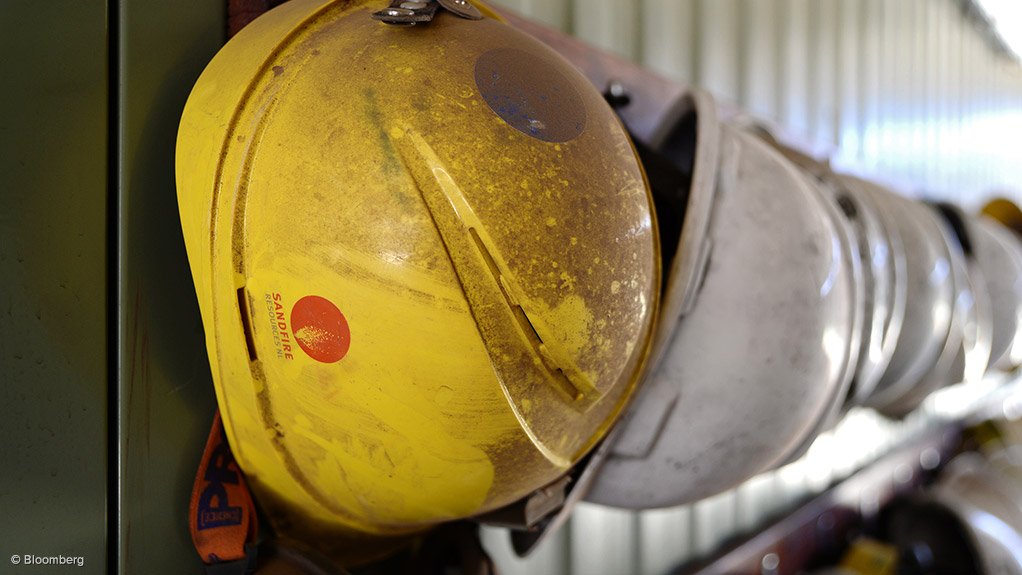Australian mining employers keep tight grip on purse strings
JOHANNESBURG (miningweekly.com) – Most workers in the Australian resources and mining industry are in for salary increases of less than 3% in their next review and a significant portion will have to do without a change to their pay cheque.
The 2016 Hays Resources and Mining Salary Guide, published on Thursday, showed that 44% of Australia’s resources and mining workers would receive an increase of less than 3% and that 40% would receive no increase. The guide stated that 14% of employees could expect a salary increase of between 3% and 6%.
Only 1% of the workforce could expect a salary hike of between 6% and 10% and just 1% could receive a double digit increase.
Hays resources and mining regional director Chris Kent said that employers remained reluctant to offer increases, unless it was absolutely necessary to secure a candidate with skills in short supply.
“Global commodity prices remain at historically low levels and while Australia’s miners are resilient, many took big steps to create leaner workforces and lower their production costs. In this cost conscious environment, any salary increases remain minimal,” he added.
Over the last year, 59% of resources and mining employers offered no salary increases. Those who did receive a salary increase found that their wallets were not that much heavier as 26% received an increase of less than 3%, 10% saw their pay increase between 3% and 6%, and 4% received a 6% to 10% increase. Just 1% received an increase of more than 10%.
However, Kent warned employers not to be complacent. “In other industries employees are starting to take matters into their own hands and ask for a pay rise.
“Staff turnover has increased in 29% of organisations. While resources and mining is not in the same position as many other industries in this regard, employers should still be ready for employees to seek some form of financial or nonfinancial reward after the lack of salary increases in recent years.”
Kent said that this would be especially evident as vacancy activity grew in response to several factors.
“A solid start to 2016 created cautious optimism across the sector with gold miners doing particularly well. We are also seeing the emergence of new markets such as lithium, while uranium is touted as a major opportunity for Australian miners. In addition, any increase in demand for coal should result in jobs given the current lean workforce.
“Western Australia was named the world’s most attractive region for mining investment by an international survey released in March 2016 based on its decrease in wage costs and greater government facilitation. The majority of new job opportunities in the state have come from the goldfields with several operations increasing production whilst ramping up exploration,” he said.
In Western Australia, geologists, and field and lab technicians were in demand, but employers were not paying a premium for their skills. Employment was often offered on a short-term trial basis.
In all regions, there was demand for experienced reliability engineers to drive new technologies for further efficiency gains.
“Blue-collar candidates are being asked to maintain their own tickets and qualifications and in many cases take steps to be dual trade qualified or multi-skilled in order to future proof their roles. This is particularly evident in South Australia and New South Wales as they continue to lose talent to the larger resources states due to a lack of opportunity,” Kent pointed out.
South Australia had a severe shortage of some niche skills, such as rubber liners and belt splicers. Underground and haul truck operators were also required in the mid-west of New South Wales.
“The strong start to 2016 for several key commodities had seen several capital improvement projects dusted off. This has created some project delivery vacancies but salaries in this area were still in decline.
In Queensland, there were vacancies for candidates with medicals and inductions ready to go on drive-in-, drive-out-friendly rosters. However, Kent said the wages on offer were now comparable to those of city-based industries leading many candidates to walk away from the sector.
He added that in the Northern Territory, mining activity had stabilised after several large mines went into care and maintenance in recent years.
Some optimism was coming out of Victoria’s gold miners and Hays expected limited movement from Tasmania other than following the trends of the larger states.
The Hays Salary Guide includes salary and recruiting trends for over 1 000 roles in 14 locations in Australia and New Zealand. It is based on a survey of 2 752 organisations, representing over 2.6-million employees.
Comments
Press Office
Announcements
What's On
Subscribe to improve your user experience...
Option 1 (equivalent of R125 a month):
Receive a weekly copy of Creamer Media's Engineering News & Mining Weekly magazine
(print copy for those in South Africa and e-magazine for those outside of South Africa)
Receive daily email newsletters
Access to full search results
Access archive of magazine back copies
Access to Projects in Progress
Access to ONE Research Report of your choice in PDF format
Option 2 (equivalent of R375 a month):
All benefits from Option 1
PLUS
Access to Creamer Media's Research Channel Africa for ALL Research Reports, in PDF format, on various industrial and mining sectors
including Electricity; Water; Energy Transition; Hydrogen; Roads, Rail and Ports; Coal; Gold; Platinum; Battery Metals; etc.
Already a subscriber?
Forgotten your password?
Receive weekly copy of Creamer Media's Engineering News & Mining Weekly magazine (print copy for those in South Africa and e-magazine for those outside of South Africa)
➕
Recieve daily email newsletters
➕
Access to full search results
➕
Access archive of magazine back copies
➕
Access to Projects in Progress
➕
Access to ONE Research Report of your choice in PDF format
RESEARCH CHANNEL AFRICA
R4500 (equivalent of R375 a month)
SUBSCRIBEAll benefits from Option 1
➕
Access to Creamer Media's Research Channel Africa for ALL Research Reports on various industrial and mining sectors, in PDF format, including on:
Electricity
➕
Water
➕
Energy Transition
➕
Hydrogen
➕
Roads, Rail and Ports
➕
Coal
➕
Gold
➕
Platinum
➕
Battery Metals
➕
etc.
Receive all benefits from Option 1 or Option 2 delivered to numerous people at your company
➕
Multiple User names and Passwords for simultaneous log-ins
➕
Intranet integration access to all in your organisation




















